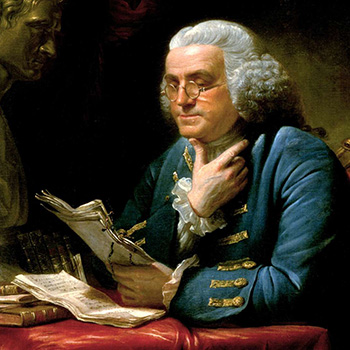Quiz Topic Sheet
The 18th Century in Literature
The 18th century in literature was a time of intellectual emancipation, formal experimentation, and deep challenges to the established order. Driven by the spirit of the Enlightenment, it saw the rise of new genres, daring works, and committed voices that paved the way for major political, social, and aesthetic upheavals.
Advertisement
Enlightenment, Philosophy, and Social Critique
- Montesquieu defended the separation of powers in The Spirit of the Laws and observed society with distance in Persian Letters.
- Voltaire denounced injustice and fanaticism in Candide, Treatise on Tolerance, and Philosophical Dictionary.
- Rousseau proposed a new political model in The Social Contract and a sentimental ideal in Julie, or the New Heloise.
- Diderot led the Encyclopedia, the Enlightenment’s major project to spread knowledge; he also published Jacques the Fatalist and Rameau’s Nephew.
- Paul-Henri Thiry d’Holbach denied the existence of God in The System of Nature, while Helvétius criticized education in On the Mind.
- Pierre Bayle and Beaumarchais, among others, opposed censorship and intolerance under the Ancien Régime.
Theatre and Satire
- Marivaux reinvented comedy with The Game of Love and Chance, exploring social role reversals.
- Beaumarchais anticipated the Revolution with The Marriage of Figaro, censored for its social critique.
- Friedrich Schiller embodied ideals of freedom in historical tragedies such as The Robbers.
- Gotthold Ephraim Lessing promoted religious tolerance with Nathan the Wise.
- Goldoni modernized Italian comedy by replacing improvised commedia dell’arte with scripted plays.
The Novel, Sensibility, and Passion
- The epistolary novel flourished with Dangerous Liaisons (Laclos), Clarissa and Pamela (Richardson), The New Heloise (Rousseau), and The Sorrows of Young Werther (Goethe).
- Rétif de La Bretonne, Bernardin de Saint-Pierre (Paul and Virginie), and Mme de Genlis exemplified sentimental literature.
- The Gothic novel began with The Castle of Otranto (Walpole), followed by Ann Radcliffe’s The Mysteries of Udolpho.
- Daniel Defoe published Robinson Crusoe (1719) and Moll Flanders, pioneering English adventure and realist fiction.
- Jonathan Swift critiqued society with Gulliver’s Travels and A Modest Proposal.
- Laurence Sterne deconstructed narrative conventions in Tristram Shandy.
Autobiography, Memoirs, and Correspondence
- Rousseau pioneered modern autobiography with Confessions.
- Casanova recounted his life in Story of My Life, a testament to a libertine and cosmopolitan century.
- Olympe de Gouges published The Declaration of the Rights of Woman and of the Female Citizen in 1791, a pioneering feminist text.
- Madame du Châtelet, Mme Roland, Mme de Staël, and other women writers contributed to the literary and political life of the century.
Censorship, Underground Publishing, and Dissent
- Many works were banned: The Nun (Diderot), Emile and The Social Contract (Rousseau), Justine (Sade), The Year 2440 (Mercier), The System of Nature (d’Holbach).
- Books circulated secretly, printed abroad or published anonymously.
- Institutions like royal censors and the Sorbonne tightly controlled literary production.
- Literature became a space of resistance to absolutism, clericalism, and social norms.
Science, Knowledge, and Utopias
- The Encyclopedia (1751) symbolized the ambition to gather and spread knowledge.
- Fontenelle popularized science with Conversations on the Plurality of Worlds.
- Louis-Sébastien Mercier envisioned a reason-governed world in The Year 2440, one of the first futuristic novels.
- Thomas Paine called for liberty in Common Sense (1776), contributing to the American Revolution.
- Jefferson, Franklin, and other American writers helped define a new nation inspired by Enlightenment ideals.
Poetry and Visionary Expression
- André Chénier combined lyricism and political engagement in Iambs, published posthumously after his execution.
- William Blake contrasted childhood innocence with harsh reality in Songs of Innocence and of Experience.
- Samuel Taylor Coleridge introduced the supernatural and fantastic in The Rime of the Ancient Mariner, heralding Romanticism.
Major Literary Figures of the Century
Montesquieu, Voltaire, Rousseau, Diderot, Sade, Beaumarchais, Marivaux, Goethe, Richardson, Defoe, Sterne, Swift, Walpole, Radcliffe, Lessing, Schiller, Chénier, Blake, Coleridge, Olympe de Gouges, and Casanova all embodied, in their own ways, the tensions, ideas, and boldness of a century where thought was liberated and literature became a powerful force of critique.
Advertisement
Quiz questions preview
-
In which novel does the character of Friday appear?
Mysterious Island | Gulliver's Travels | Moll Flanders | Robinson Crusoe -
Which playwright modernized Italian comedy by replacing “commedia dell'arte” with written plays?
Pietro Metastasio | Vittorio Alfieri | Ludovico Ariosto | Carlo Goldoni -
Which one is an 18th-century writer?
Montesquieu | John Milton | Jean Racine | Michel de Montaigne -
Which German literary movement rejected Enlightenment rationalism in favor of emotion and individual genius?
Nacht und Nebel | Biedermeier | Weimarer Klassik | Sturm und Drang -
Which of Voltaire's works denouncing religious hypocrisy was published anonymously in 1764 to avoid censorship?
The Century of Louis XIV | Treatise on tolerance | Essay on the mores and spirit of nations | Philosophical Dictionary


